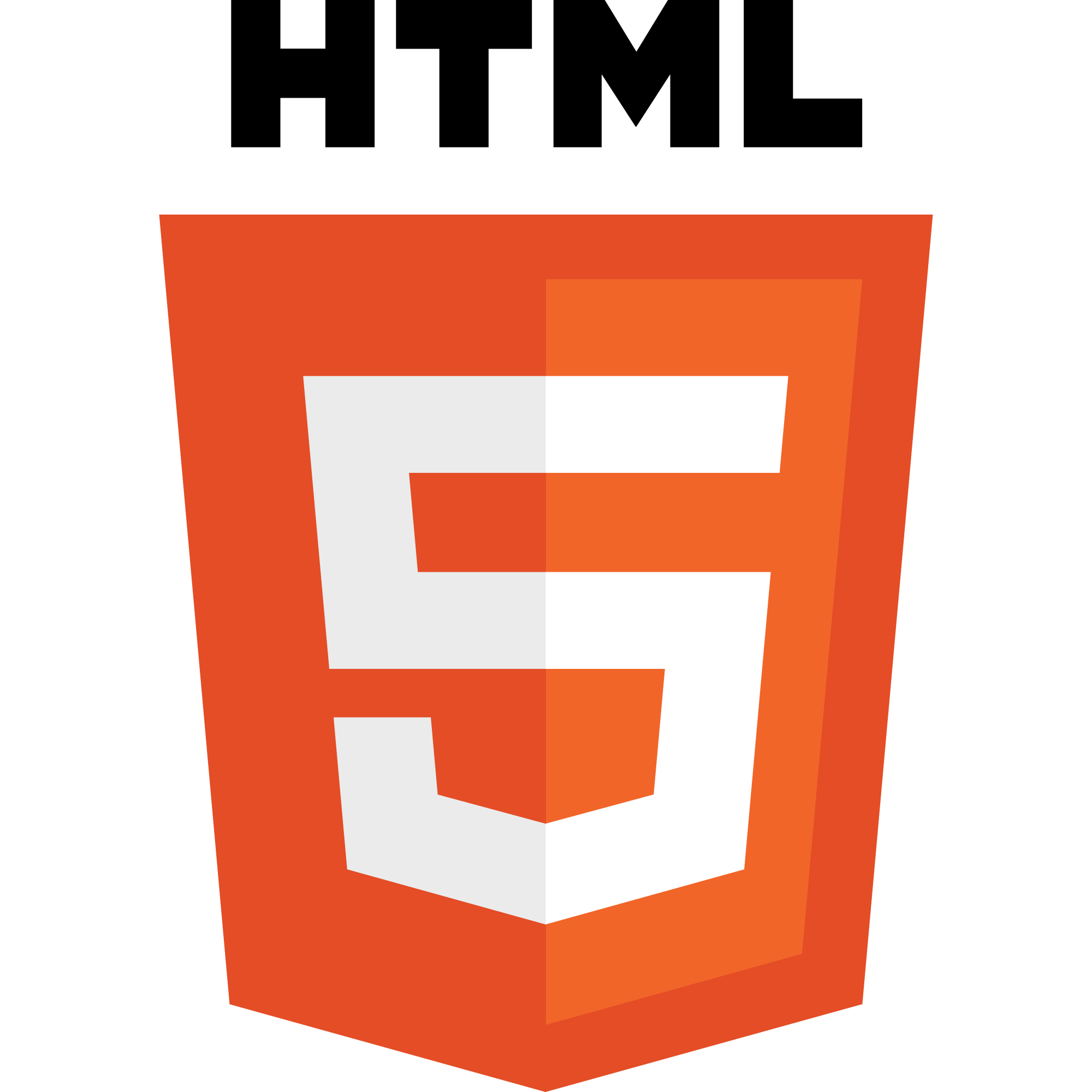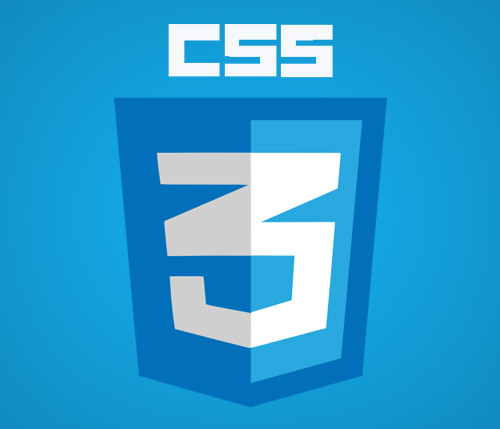HTML / CSS
Treinamento da InfoJr - UFBA
Criado por Mateus Cordeiro / Gabriel Gomes / Vinicius Dias / Victor Copque
Front-End vs Back-End
Em ciência da computação, front-end e back-end são termos generalizados que referem-se às etapas inicial e final de um processo. O front-end é responsável por coletar a entrada em várias formas do usuário e processá-la para adequá-la a uma especificação em que o back-end possa utilizar. O front-end é uma espécie de interface entre o usuário e o back-end. Ambos podem estar distribuídos entre um ou mais sistemas.


HTML is a markup language for describing web documents (web pages).
- HTML stands for Hyper Text Markup Language
- A markup language is a set of markup tags
- HTML documents are described by HTML tags
- Each HTML tag describes different document content
Arquivo .html
Estrutura Básica
<!DOCTYPE html>
<html>
<head>
<title><!-- Título da Página --></title>
</head>
<body>
<!-- Corpo da Página -->
</body>
</html>
DOCTYPE
<!DOCTYPE html>
The <!DOCTYPE html> declaration must be the very first thing in your HTML document, before the </html> tag.
The <!DOCTYPE html> declaration is not an HTML tag; it is an instruction to the web browser about what version of HTML the page is written in.
There are three different <!DOCTYPE html> declarations in HTML 4.01. In HTML5 there is only one.
<html>
<html></html>
The <html> tag tells the browser that this is an HTML document.
The <html> tag represents the root of an HTML document.
The <html> tag is the container for all other HTML elements (except for the tag).
<title>
<title></title>
The <title> tag is required in all HTML documents and it defines the title of the document.
- defines a title in the browser toolbar
- provides a title for the page when it is added to favorites
- displays a title for the page in search-engine results
<body>
<body></body>
The <body> tag defines the document's body.
The <body> element contains all the contents of an HTML document, such as text, hyperlinks, images, tables, lists, etc.
Parágrafos, cabeçalhos e texto
p
See the Pen JqDjv by Mateus Cordeiro (@mateuscgc) on CodePen.
cabeçalhos (headers)
See the Pen HGKof by Mateus Cordeiro (@mateuscgc) on CodePen.
blackquote e q
See the Pen aBhLF by Mateus Cordeiro (@mateuscgc) on CodePen.
pre
See the Pen xdKvy by Mateus Cordeiro (@mateuscgc) on CodePen.
b, strong, i, em
See the Pen zBKfn by Mateus Cordeiro (@mateuscgc) on CodePen.
dfn, cite, var, code, samp, kdb
See the Pen CGcwy by Mateus Cordeiro (@mateuscgc) on CodePen.
br, hr
See the Pen iHcog by Mateus Cordeiro (@mateuscgc) on CodePen.
section, article
See the Pen tDuvo by Mateus Cordeiro (@mateuscgc) on CodePen.
The <section> and <article> tags are new in HTML5.
Links
<p>This is a <a href="www.google.com">link</a></p>See the Pen gojxF by Gabriel Gomes (@Gabrielgqa) on CodePen.
In HTML, links are defined with the <a> tag.
Links - Colors and Icons
<p>This is a <a href="www.google.com.br">link</a></p>See the Pen KJCut by Gabriel Gomes (@Gabrielgqa) on CodePen.
The link can be styled.
Links - Relative Address
See the Pen plHnC by Mateus Cordeiro (@mateuscgc) on CodePen.
Links - Types of Links
See the Pen umqtx by Mateus Cordeiro (@mateuscgc) on CodePen.
There are some types of links, including mailto and tel
<div>
The <div> tag defines a division or a section in an HTML document.
The <div> tag is used to group block-elements to format them with CSS.
See the Pen tbeFB by Mateus Cordeiro (@mateuscgc) on CodePen.
<span>
The <span> tag is used to group inline-elements in a document.
The <span> tag provides no visual change by itself.
The <span> tag provides a way to add a hook to a part of a text or a part of a document.
See the Pen DwHua by Mateus Cordeiro (@mateuscgc) on CodePen.
Images
In HTML, images are defined with the <img> tag.
The <img> tag is empty, it contains attributes only, and does not have a closing tag.
The src attribute defines the url (web address) of the image:
<img src="url">
some attributes of tag <img>
The alt attribute specifies an alternate text for the image, if it cannot be displayed.
The value of the alt attribute should describe the image in words:
<img src="html5.gif" alt="The official HTML5 Icon">
some attributes of tag <img>
You can use the style attribute to specify the width and height of an image.
The values are specified in pixels (use px after the value):
<img src="html5.gif" alt="HTML5 Icon" style="width:128px;height:128px">
some attributes of tag <img>
Alternatively, you can use width and height attributes.
The values are specified in pixels (without px after the value):
<img src="html5.gif" alt="HTML5 Icon" width="128" height="128"">
Image as Link
It is common to use images as links:
<a href="default.asp">
<img src="smiley.gif" alt="HTML tutorial" style="width:42px;height:42px;border:0">
</a>
<table>
Tables are defined with the <table> tag.
Tables are divided into table rows with the <tr>tag.
Table rows are divided into table data with the <td> tag.
A table row can also be divided into table headings with the <th>tag.
Example
<table>
<tr>
<th>Firstname</th>
<th>Lastname</th>
<th>Points</th>
</tr>
<tr>
<td>Eve</td>
<td>Jackson</td>
<td>94</td>
</tr>
<tr>
<td>Ada<d>
<td>Jackson</td>
<td>78</td>
</tr>
</table>See the Pen Izrad by Gabriel Gomes (@Gabrielgqa) on CodePen.
<thead>, <tfoot>, and a <tbody>
An HTML table with a <thead>, <tfoot>, and a <tbody> element:<table>
<thead>
<tr>
<th>Month</th>
<th>Savings</th>
</tr>
</thead>
<tfoot>
<tr>
<td>Sum</td>
<td>$180</td>
</tr>
</tfoot>
<tbody>
<tr>
<td>January</td>
<td>$100</td>
</tr>
<tr>
<td>February</td>
<td>$80</td>
</tr>
</tbody>
</table>See the Pen Aockd by Gabriel Gomes (@Gabrielgqa) on CodePen.
Table Attributes
Colspan: To make a cell span more than one column, use the colspan attribute:
<table style="width:100%">
<tr>
<th>Name</th>
<th colspan="2">Telephone</th>
</tr>
<tr>
<td>Bill Gates</td>
<td>555 77 854</td>
<td>555 77 855</td>
</tr>
</table>See the Pen IECjo by Gabriel Gomes (@Gabrielgqa) on CodePen.
Table Attributes
Rowspan: To make a cell span more than one row, use the rowspan attribute:
<table style="width:100%">
<tr>
<th>First Name:</th>
<td>Bill Gates</td>
</tr>
<tr>
<th rowspan="2">Telephone:</th>
<td>555 77 854</td>
</tr>
<tr>
<td>555 77 855</td>
</tr>
</table>See the Pen wKLuC by Gabriel Gomes (@Gabrielgqa) on CodePen.
Forms
HTML forms are used to pass data to a server.
An HTML <form> can contain input elements like text fields, checkboxes, radio-buttons, submit buttons and more. A <form> can also contain select lists, textarea, fieldset, legend, and label elements.
The <form> tag is used to create an HTML <form>:
<form>
.
input elements
.
</form>
Form - The Input Element
The most important form element is the <input> element.
The <input> element is used to select user information.
An <input> element can vary in many ways, depending on the type attribute. An <input> element can be of type text field, checkbox, password, radio button, submit button, and more.
The most common input types are described below.
Text Fields
<input type="text"> defines a one-line input field that a user can enter text into:
<form>
First name: <input type="text" name="firstname"><br>
Last name: <input type="text" name="lastname">
</form>See the Pen ynArH by Gabriel Gomes (@Gabrielgqa) on CodePen.
Password Field
<input type="password"> defines a password field:
<form>
Password: <input type="password" name="pwd">
</form>See the Pen jarlv by Gabriel Gomes (@Gabrielgqa) on CodePen.
Radio Buttons
<input type="radio"> defines a radio button. Radio buttons let a user select ONLY ONE of a limited number of choices:
<form>
<input type="radio" name="sex" value="male">Male<br>
<input type="radio" name="sex" value="female">Female
</form>See the Pen hxzqb by Gabriel Gomes (@Gabrielgqa) on CodePen.
Checkboxes
<input type="checkbox"> defines a checkbox. Checkboxes let a user select ZERO or MORE options of a limited number of choices.
<form>
<input type="radio" name="sex" value="male">Male<br>
<input type="radio" name="sex" value="female">Female
</form>See the Pen hxzqb by Gabriel Gomes (@Gabrielgqa) on CodePen.
Submit Button
<input type="submit"> defines a submit button.
A submit button is used to send form data to a server. The data is sent to the page specified in the form's action attribute. The file defined in the action attribute usually does something with the received input:
<form name="input" action="demo_form_action.asp" method="get">
Username: <input type="text" name="user">
<input type="submit" value="Submit">
</form>See the Pen ioIyk by Gabriel Gomes (@Gabrielgqa) on CodePen.
Selects
The <select> element is used to create a drop-down list.
The <option> tags inside the <select> element define the available options in the list.
<select>
<option value="volvo">Volvo</option>
<option value="saab">Saab</option>
<option value="mercedes">Mercedes</option>
<option value="audi">Audi</option>
</select>See the Pen iuGDs by Gabriel Gomes (@Gabrielgqa) on CodePen.
Textarea
The <textarea> tag defines a multi-line text input control.
A text area can hold an unlimited number of characters, and the text renders in a fixed-width font (usually Courier).
The size of a text area can be specified by the cols and rows attributes, or even better; through CSS' height and width properties.
<textarea rows="4" cols="50">
At w3schools.com you will learn how to make a website. We offer free tutorials in all web development technologies.
</textarea>See the Pen rjsCv by Gabriel Gomes (@Gabrielgqa) on CodePen.
Input Types
HTML5 has several new input types for forms. These new features allow better input control and validation.
This chapter covers the new input types:
- color
- date
- datetime
- datetime-local
- month
- numember
- rage
- search
- tel
- time
- url
- week
Examples of use
<form>
<p>Type number</p>Quantity:
<input type="number" name="points" min="0" max="100" step="10" value="30">
</form>
<form>
<p>Type date</p>Birthday:
<input type="date" name="bday">
</form>
<form>
<p>Type color</p>Select your favorite color:
<input type="color" name="favcolor">
</form>
<form>
<p>Type range</p>
<input type="range" name="points" min="0" max="10">
</form>
<form>
<p>Type mail</p>E-mail:
<input type="email" name="email">
</form>
<form>
<p>Type tel</p>Telephone:
<input type="tel" name="usrtel">
</form>See the Pen BoIeb by Gabriel Gomes (@Gabrielgqa) on CodePen.
Other Attributes
An HTML form with autocomplete on (and off for one input field):
<form action="demo_form.asp" autocomplete="on">
First name:<input type="text" name="fname"><br>
Last name: <input type="text" name="lname"><br>
E-mail: <input type="email" name="email" autocomplete="off"><br>
<input type="submit">
</form>See the Pen kuzvd by Gabriel Gomes (@Gabrielgqa) on CodePen.
The novalidate attribute is a boolean attribute.
When present, it specifies that the form-data (input) should not be validated when submitted.
<form action="demo_form.asp" novalidate>
E-mail: <input type="email" name="user_email">
<input type="submit">
</form>See the Pen gHadD by Gabriel Gomes (@Gabrielgqa) on CodePen.
Other Attributes
The placeholder attribute specifies a short hint that describes the expected value of an input field (e.g. a sample value or a short description of the expected format).
<form action="demo_form.asp">
<input type="text" name="fname" placeholder="First name"><br>
<input type="text" name="lname" placeholder="Last name"><br>
<input type="submit" value="Submit">
</form> See the Pen HnGmf by Gabriel Gomes (@Gabrielgqa) on CodePen.
The required attribute is a boolean attribute.
When present, it specifies that an input field must be filled out before submitting the form.
<form action="demo_form.asp">
Username: <input type="text" name="usrname" required>
<input type="submit">
</form>See the Pen svqDu by Gabriel Gomes (@Gabrielgqa) on CodePen.
Other Attributes
The autofocus attribute is a boolean attribute.
When present, it specifies that an <input> element should automatically get focus when the page loads.
<form action="demo_form.asp">
First name: <input type="text" name="fname" autofocus><br>
Last name: <input type="text" name="lname"><br>
<input type="submit">
</form>See the Pen LBEwq by Gabriel Gomes (@Gabrielgqa) on CodePen.

Cascading Style Sheets (CSS) is a simple mechanism for adding style (e.g., fonts, colors, spacing) to Web documents.
- Styles define how to display HTML elements
- Styles were added to HTML 4.0 to solve a problem
- External Style Sheets can save a lot of work
- External Style Sheets are stored in CSS files
Estrutura Básica
Seletor {
propriedade : valor ;
propriedade : valor ;
propriedade : valor ;
}
Inline CSS
<div style="width: 200px; height: 200px; border-radius: 6px; display: block;">
<!-- mais html -->
<div>
Embendded CSS
<!DOCTYPE html>
<html>
<head>
<title><!-- Título da Página --></title>
<style>
body {
background-color: linen;
}
h1 {
color: maroon;
margin-left: 40 px;
}
</style>
</head>
<body>
<!-- Corpo da Página -->
</body>
</html>
CSS Externo
<!DOCTYPE html>
<html>
<head>
<title><!-- Título da Página --></title>
<link rel="stylesheet" type="text/css" href="../css/stylesheet.css">
</head>
<body>
<!-- Corpo da Página -->
</body>
</html>
body {
background-color: linen;
}
h1 {
color: maroon;
margin-left: 40 px;
}
Seletores CSS
Seletor Universal *
* {
margin : 0px ;
color : blue ;
}
.Class Seleciona todos os elementos com determinada classe
.msg-box {
width: 200px;
height: 100px;
padding: 20px;
}
#Id Seleciona o elemento com determinada id
#news {
float: left;
position: absolute;
display: inline;
}
tag Seleciona todos os elementos da tag.
p {
color: red;
}
tag1, tag2 Seleciona todos os elementos da lista.
div, .box, #comentario {
font-size: 20px;
font-family: arial;
}
div {
font-size: 20px;
font-family: arial;
}
.box {
font-size: 20px;
font-family: arial;
}
#comentario {
font-size: 20px;
font-family: arial;
}
tag1 tag2 Seleciona todos os tag2 dentro de tag1.
.msg-box p {
color: pink;
text-align: center;
}
tag1 > tag2 Seleciona todos os tag2 que são filhos de tag1.
#menu > div {
width: 100px;
margin-top: 20px;
}
tag1 + tag2 Seleciona todos os tag2 ques estão imediatamente depois de tag1.
.title + .subtitle{
color: #777;
font-wheight: bold;
}
tag1 ~ tag2 Seleciona todos os tag2 que apareceram depois de pelo menos um tag1
p ~ ul {
background: #ff0000;
}
tag:active Seleciona um elemento ativo
a {
background-color: blue;
}
a:active {
background-color: yellow;
}
tag:hover Seleciona o elemento quando o mouse está em cima dele
div {
width: 70px;
}
div:hover {
width: 100px;
}
tag:first-child Selecionam as tag que sejam a primeira filha de seus pais
.box:first-child {
background-color: red;
color: grey;
}
tag:Last-Child Seleciona as tag que são a ultima filha de seus pais
.box:last-child {
background-color: red;
color: grey;
}
tag:nth-child(x)Seleciona o elemento tag que é filha de número x
.box:nth-child(10) {
background-color: red;
color: grey;
}
Acesse a lista completa de seletores aqui!
Unidades
Em CSS temos várias unidades de medida: px, pt, em, rem, %, entre outras.
Pixel
Você utiliza px para definir a largura de um elemento, o tamanho do texto, a espessura da borda e outras coisas. A unidade px é utilizada para definir o tamanho dos textos por que é a medida mais exata que você pode encontrar. Por não ser uma medida variável, são fáceis de controlar.
<p>Esse é o texto</p>See the Pen pJLaf by Gabriel Gomes (@Gabrielgqa) on CodePen.
EM
O problema de utilizar fonts em em é que elas são variáveis como a porcentagem. Diferentemente da utilização de pixels, temos que fazer um pouco de matemática para planejar nossas unidades no projeto. Não é nada de outro mundo, então pare de preguiça.
O cálculo: 20 ÷ 16 = 1.25em
<p>Esse é o texto</p>See the Pen nBvKq by Gabriel Gomes (@Gabrielgqa) on CodePen.
Porcentagem
O uso do % é bem semelhante ao do EM. Assim, ele é também variável de acordo com o contexto.
<p>Esse é o texto</p>See the Pen txnqu by Gabriel Gomes (@Gabrielgqa) on CodePen.
Seria interessante se o valor do contexto fosse sempre o mesmo, não é?
REM
A REM sempre terá o valor de contexto do ROOT (é isso que significa o R do REM), ou seja, sempre o body… Os valores ficariam assim se referenciando pelo body.
Fontes
Em CSS temos algumas propriedades específicas para estilização das fontes, são elas:
Exemplo de uso
<p class="fs">Texto formatado</p>
<p class="ff">Texto formatado</p>
<p class="fv">Texto formatado</p>
<p class="fst">Texto formatado</p>
<p class="fw">Texto formatado</p>
<p class="f">Texto formatado<p>See the Pen BzADb by Gabriel Gomes (@Gabrielgqa) on CodePen.
Texto
Em CSS temos algumas propriedades específicas para estilização detextos, são elas:
Exemplo de uso
<p class="cl">Texto formatado</p>
<p class="ls">Texto formatado</p>
<p class="ws">Texto formatado</p>
<p class="ta">Texto formatado</p>
<p class="td">Texto formatado</p>
<p class="tt">Texto formatado</p>
<p class="dc">Texto formatado</p>See the Pen fsBwL by Gabriel Gomes (@Gabrielgqa) on CodePen.
Cores e Planos de Fundo
Como já vimos, em CSS é possível alterar as cores. Isso serve para qualquer elemento HTML.
Para o valor da cor temos diferentes tipos de medida:
I { color: red }
I { color: #FF0000 }
I { color: rgb (255, 0, 0) }
Backgronds
A propriedade background define as características (os valores na regra CSS) do fundo dos elementos HTML. Elas são:
Exemplo de uso
<div id="bc"></div>
<div id="bi"></div>See the Pen cHJph by Gabriel Gomes (@Gabrielgqa) on CodePen.
Cursor
Estiliza o cursor do mouse.
Alguns dos valores são:
A propriedade borda
Esta propriedade é usada para definir o estilo, cor e espessura da borda do elemento.
<p>Esse é um parágrafo</p>See the Pen tpaAq by Gabriel Gomes (@Gabrielgqa) on CodePen.
.box {
border: 3px solid yellow;
}
.box {
border-style: solid;
border-width: 3px;
border-color: yellow;
}
Estilos de Bordas
See the Pen border styles by Mateus Cordeiro (@mateuscgc) on CodePen.
Adcionando bordas a lados especificos
See the Pen gpJLm by Mateus Cordeiro (@mateuscgc) on CodePen.
See the Pen oreiu by Mateus Cordeiro (@mateuscgc) on CodePen.
Margens
margin especifica um determinado espaçamento em volta de um elemento.
See the Pen side borders by Mateus Cordeiro (@mateuscgc) on CodePen.
Número de valores
margin: 25px 50px 75px 100px;
/*top margin is 25px*/
/*right margin is 50px/
/*bottom margin is 75px*/
/*left margin is 100px*/
margin: 25px 50px 75px;
/*top margin is 25px*/
/*right and left margins are 50px*/
/*bottom margin is 75px*/
margin: 25px 50px;
/*top and bottom margins are 25px*/
/*right and left margins are 50px*/
margin: 25px;
/*all four margins are 25px*/
Padding
padding especifica um determinado espaçamento entre os limites do elemento e seu conteudo.
See the Pen xiEej by Mateus Cordeiro (@mateuscgc) on CodePen.
Número de valores
padding: 25px 50px 75px 100px;
/*top padding is 25px*/
/*right padding is 50px/
/*bottom padding is 75px*/
/*left padding is 100px*/
padding: 25px 50px 75px;
/*top padding is 25px*/
/*right and left padding are 50px*/
/*bottom padding is 75px*/
padding: 25px 50px;
/*top and bottom padding are 25px*/
/*right and left padding are 50px*/
padding: 25px;
/*all four margins are 25px*/
Estilizando Tabelas
See the Pen HBxzG by Mateus Cordeiro (@mateuscgc) on CodePen.
Position
A propriedade position especifica o tipo de posicionamento de um elemento.
position: static;
position: absolute;
position: fixed;
position: relative;
position: initial;
position: inherit;
Display
A propriedade display especifica o tipo de caixa de um elemento html.
display: inline; /*default*/
display: block; /*Ex: <p>*/
display: inline-block;
display: list-item;
display: none;
display: initial;